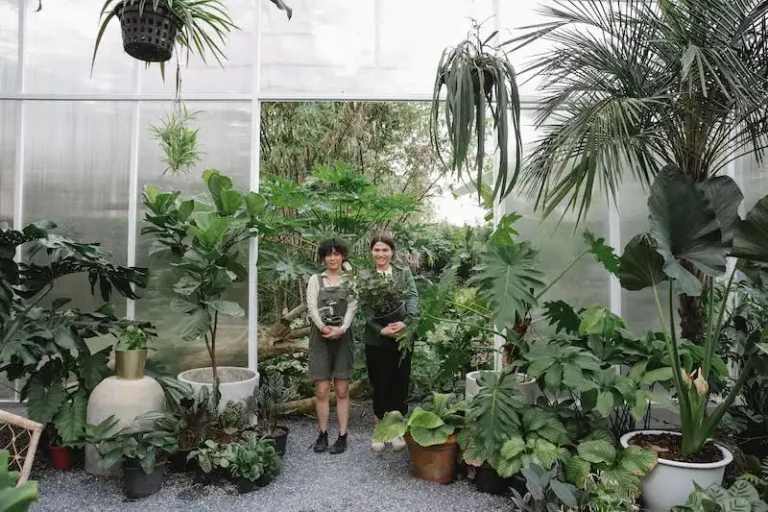Belgian endive, also known as witloof chicory or simply endive, is a top choice for both novice and experienced gardeners. This vegetable is a versatile ingredient that can be used in a variety of dishes, ranging from salads to braised recipes. Its unique taste, with hints of bitterness and sourness, adds an edgy flavor to any dish.
Belgian endive is especially popular in braising recipes, where it is cooked slowly in water or balsamic vinegar until it becomes soft and tender. This braising technique helps to reduce the bitterness and bring out the natural sweetness of the vegetable. When cooked, the light green leaves of the endive turn into a lighter-colored, creamy white, adding an attractive visual element to your dishes.
If you’ve never tried growing Belgian endive before, you might be wondering how to get started. There are three main varieties of endives to choose from: the broad-leafed escarole, the delicate-looking curly endive, and the compact and lighter-colored Belgian endive. Depending on your location and growing techniques, you can choose the variety that suits your needs the best.
When buying Belgian endive, look for heads that are firm and compact. Avoid endives with browning or softening leaves. To enjoy the delicate flavor of raw endive, you can add it to salads or use it as a base for a light stir-fry. However, the most popular way to enjoy Belgian endive is by braising it. The cooking process enhances the flavors and reduces the bitterness, resulting in a delicious and tender vegetable that is perfect for any meal.
What Is Belgian Endive
Belgian endive, also known as witloof or chicory, is a versatile vegetable that is popular in European cuisine, albeit relatively unknown to many people in other parts of the world. This small and compact vegetable is grown in a unique way, resulting in its delicately delicious flavor.
Belgian endive is actually the result of growing chicory roots in a dark environment. The roots are first grown outdoors in fields, where they develop large, broad-leafed greens. These greens are then cut off, and the roots are harvested and transferred to dark forcing rooms.
In the forcing rooms, the roots are placed in containers where they are kept in complete darkness for about three weeks. This process encourages the growth of small, compact heads, with delicate-looking, pale yellow leaves. The endive heads are then harvested, resulting in the delicious Belgian endive that cooks and food enthusiasts all over the world enjoy.
Belgian endive can be used in a variety of dishes and recipes. It can be braised, roasted, stir-fried, or simply eaten raw in salads. When braised or cooked, Belgian endive develops a slightly sweet and delicate flavor. Braising involves cooking the endive slowly in a small amount of liquid, such as water or broth, until it becomes tender. This cooking method helps to reduce the bitter flavors that can be present in raw endive.
The light and delicate flavor of Belgian endive pairs well with a variety of seasonings and ingredients. It can be braised with balsamic vinegar and served as a side dish, or it can be used as a base for a stir-fry with other vegetables and proteins.
Belgian endive is sold whole, with the leaves tightly packed together in a cylindrical shape. When selecting endive at the grocery store, look for heads that are firm and free from blemishes. The color of the leaves can vary from white to pale yellow, with lighter-colored endive being milder in flavor.
To store Belgian endive, place the heads in a perforated plastic bag and store them in the vegetable drawer of the refrigerator. Use the endive within 7 to 10 days to enjoy the best flavor and texture.
In conclusion, Belgian endive is a unique and flavorful vegetable that is often overlooked in many cuisines. Whether braised, roasted, or simply used raw in salads, the versatile nature of Belgian endive makes it a great addition to a wide range of dishes. So next time you’re looking for something a little different to try, consider adding Belgian endive to your grocery list and enjoy its delicate flavor.
How to Cook With Belgian Endive
Belgian endive is a versatile and delicate vegetable that can be cooked in a variety of ways. Although it is often enjoyed raw in salads, it also lends itself well to cooking techniques like braising and stir-frying. Whether you are growing your own Belgian endive or buying it from the grocery store, there are several delicious dishes you can create with this unique vegetable.
When cooking with Belgian endive, it is important to keep in mind that it can be quite bitter when eaten raw. However, cooking it helps to mellow out the flavor and softens the vegetable, making it more enjoyable to eat. One of the most popular ways to cook Belgian endive is to braise it. This cooking method involves cooking the endive slowly in a small amount of liquid, such as water or broth, until it becomes tender.
Braised Belgian endive can be served as a side dish or incorporated into other recipes, especially ones featuring fish or poultry. The slight bitterness of the endive is balanced by the cooking process, resulting in a delicate flavor that pairs well with lighter-colored proteins. To add even more depth of flavor to braised endive, you can use additional seasonings like salt, herbs, or even balsamic vinegar.
Another way to cook Belgian endive is to stir-fry it. This method involves quickly cooking the endive in a hot pan with oil and other ingredients. Stir-fried Belgian endive retains its crunchy texture and has a slightly edgy flavor. It can be used as a topping for dishes like pasta or served as a side dish alongside grilled meats.
If you are new to cooking with Belgian endive, learning how to cook it properly will help you enjoy its unique flavor and delicate texture. Whether you choose to braise or stir-fry this versatile vegetable, the end result is sure to be a delicious addition to your meals.
To make the most of your Belgian endive, it is also important to consider its cultivation and storage. Belgian endive grows in dark rooms where it is protected from light, which is what gives it its delicate-looking, cylindrical shape. When buying Belgian endive, look for small, compact heads with tightly packed leaves. These will be the freshest and have the best flavor.
As Belgian endive is a delicate vegetable, it is important to store it properly. Keep it in the refrigerator in a plastic bag or wrapped in a damp cloth, as it tends to wilt and lose its crispness if stored improperly. Belgian endive can be stored for about three to five days before it starts to wilt.
Overall, cooking with Belgian endive opens up a world of flavors and versatile dishes. Whether you choose to braise it or stir-fry it, this unique vegetable adds a delightful and sophisticated touch to your meals. So, next time you come across Belgian endive, don’t hesitate to pick up a few and experiment with different cooking techniques!
What Does It Taste Like
Belgian endive has a unique taste that can be simply described as bitter and slightly tangy. Some people compare the flavor to that of a radicchio or a chicory. When cooked or braised, the bitterness is mellowed out and the endive becomes tender and sweet.
You can buy Belgian endive in grocery stores all year round, but it is best to buy it when it is in season, from November to April. Look for heads that are compact and firm, with green and white leaves. Avoid endives that have wilty or mushy leaves.
Belgian endive can be used in a variety of ways in your cooking. It can be braised to soften its edges and bring out its sweet flavors. You can also use it raw in salads for a nice crunch. Some popular recipes include braised endive with balsamic reduction, stir-fried endive with escarole, or simply served as a side dish.
When storing Belgian endive, keep them in a plastic bag in the refrigerator’s crisper drawer. They should last for about 10 days. When growing Belgian endive, the flavor can vary depending on the location and cultivation techniques being used. If you’ve never tried Belgian endive before, it’s definitely worth giving it a try and enjoying its unique taste.
Belgian Endive Recipes
Belgian endive, also known as white endive or witloof, is a versatile vegetable that can be used in a variety of ways in the kitchen. Although it has a delicate-looking appearance, the flavor of Belgian endive is actually quite strong and bitter. However, this bitterness can be reduced or masked by using certain cooking techniques and pairing it with other ingredients.
One popular way to enjoy Belgian endive is to use it in salads. Its crisp and slightly bitter-flavored leaves add a unique taste and texture to salads. You can mix it with other greens like escarole or lettuce for a well-rounded flavor. Additionally, Belgian endive can be used as a base for a light and refreshing salad by adding ingredients like balsamic vinegar, olive oil, and salt.
Another delicious way to enjoy Belgian endive is to braise it. Braising involves cooking the endive slowly in a liquid, such as broth or wine, until it becomes soft and tender. This method helps to soften the bitterness of the vegetable and adds a depth of flavor. You can braise whole heads of Belgian endive or cut them into smaller pieces before cooking.
In addition to salads and braised dishes, Belgian endive can be used in a variety of other recipes. It can be grilled, roasted, or even stuffed with different fillings. The compact and cylindrical shape of Belgian endive makes it a great vessel for various ingredients, allowing you to get creative with your cooking.
When it comes to storage, it’s important to keep Belgian endive in cool rooms or the vegetable drawer of your refrigerator. The white heads of Belgian endive should be kept away from light to prevent them from turning green. By storing them properly, you can enjoy their fresh taste and crisp texture for up to 10 days.
In Belgium, Belgian endive is a staple in many traditional dishes. It is often used in the country’s famous “endive and ham gratin,” which combines the bitter endive with salty ham and creamy cheese. Another popular dish is “chicons au gratin,” where the endive is cooked with béchamel sauce and topped with grated cheese before being baked until golden and bubbly.
Whether you’re a seasoned cook or just starting out, Belgian endive presents an opportunity to explore new flavors and techniques in the kitchen. Its distinctive taste and delicate appearance make it a fancy addition to any meal. So next time you’re at the grocery store, consider picking up some Belgian endive and discovering all the ways you can enjoy this unique vegetable!
| Belgian Endive Recipes |
|---|
| Belgian Endive Salad |
| Braised Belgian Endive |
| Grilled Belgian Endive |
| Roasted Belgian Endive |
| Stuffed Belgian Endive |
Where to Buy Belgian Endive
If you’re wondering where to buy Belgian endive, you’re in luck! This delicate-looking green is widely available and can be found in many grocery stores and specialty markets. Whether you’re looking to braise it, use it in salads, or incorporate it into other dishes, you’ll find that Belgian endive is a versatile and flavorful addition to your meals.
Belgian endive is often sold in small, round rooms, known as forcing rooms, which are used to control the growth of the endives. These forcing rooms feature a specific light and temperature setting, allowing the endive to develop its characteristic pale color. The cultivation techniques used in these rooms result in a mild flavor and tender texture that make Belgian endive a favorite in many recipes.
If you’re new to cooking with Belgian endive, learning how to buy and prepare it is the first step. When selecting Belgian endive, look for heads that are firm and crisp, with tightly packed leaves. The white leaves should be free from blemishes and have a slight sheen to them. Avoid endive that shows signs of wilting or discoloration.
Belgian endive can be eaten both raw and cooked. Its delicate flavor and slightly bitter undertones make it a great addition to salads, or it can be used in braising dishes to soften its flavor. Braising involves cooking the endive slowly in a mixture of water or stock, allowing it to soften and absorb the flavors of the cooking liquid.
When it comes to cooking techniques, Belgian endive can be used in a variety of dishes. It can be sautéed, stir-fried, or even grilled for a distinct and edgy flavor. It pairs well with other greens, like escarole, and can be used in a variety of recipes.
So, whether you’re looking to buy Belgian endive for its unique flavor or for its versatility in the kitchen, you’ll find that it’s a top choice for many chefs and home cooks. Its light and delicate-looking leaves are sure to add something special to your meals, whether you’re reducing it to a simple salad or incorporating it into a more complex dish.



